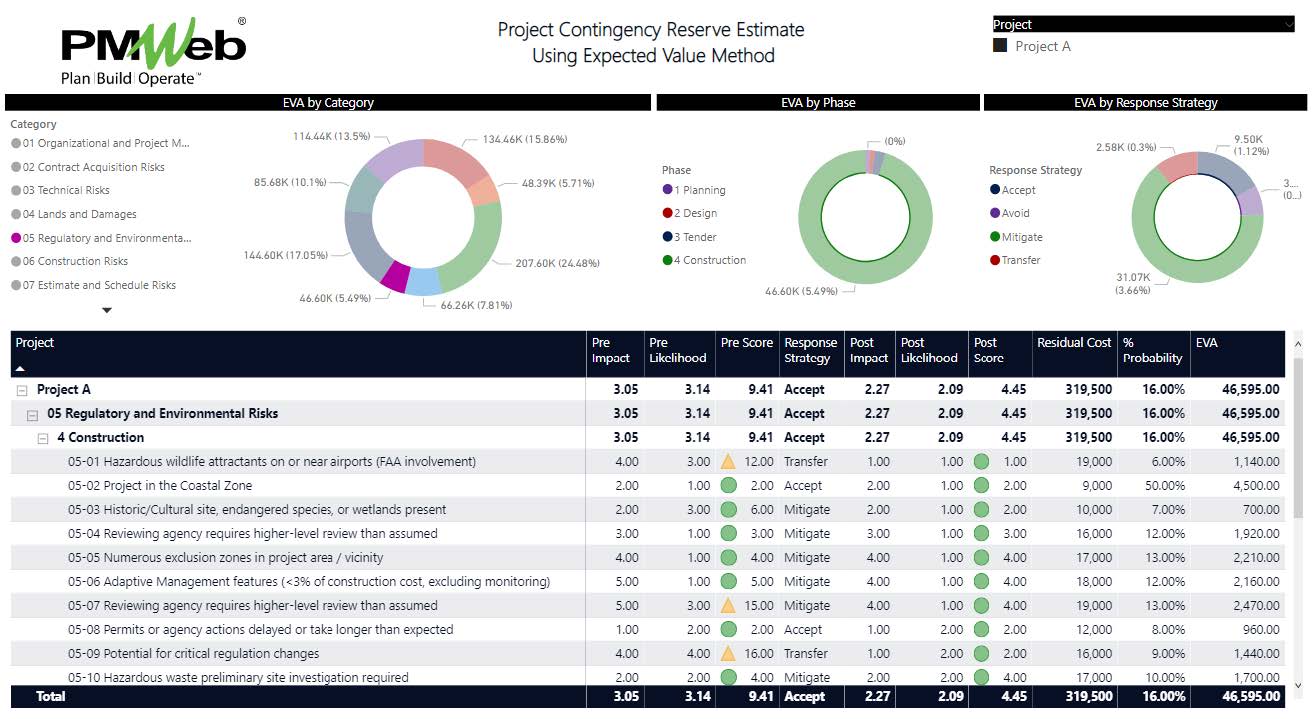Project contingency reserve is the amount to be added to the project’s baseline budget to cover the monetary impacts of project risks or uncertainties. Project contingency reserve is established for each project based on the acceptable risks, the degree of uncertainty, and the desired level of confidence for meeting the project budget. Unlike management reserve which is the reserve amount for unknown unknowns for risks that come from situations that are so unexpected that they would not be considered, project contingency reserve is for known unknowns risks that the project management team is aware of. Those could include for example significant changes in the scope of the project, unforeseen extreme weather conditions, etc.
Similar to all other components of the estimated project budget, the overestimated or underestimated project contingency reserve could have drastic impacts on the successful delivery of a capital construction project. Underestimated contingency reserve amount might cause projects to face funds shortage which might cause delays when requesting approval for additional funds. Similarly, overestimated contingency reserve amounts would result in funds being blocked and not being used to fund other needed projects.
One of the most used methods to estimate the contingency reserve amount with improved accuracy is the Expected Value Method. The method assumes that for each risk identified on the project, the cost impact along with its probability or likelihood of occurrence will be also identified. Those identified risks are analyzed and a response strategy is recommended to each risk to treat its pre-mitigation risk exposure. The post-mitigation risk exposure is calculated from the post-mitigation cost impact and post-mitigation probability of occurrence. The expected value of each identified risk is calculated by multiplying the estimated cost impact of the residual risk value by the estimated probability of occurrence. The contingency reserve is the sum of the calculated expected value of all identified and treated risks. To improve the estimated contingency reserve value using the Expected Value Method, it is highly recommended to develop a comprehensive risk register of all known risks with their cost impact and probability of occurrence. The quality of the risk register depends on the extent of risks identified under each project phase (plan, design, tender, construction, testing and commissioning, and handover) and the risk category. The risk categories for capital construction projects usually include organizational and project management risks, contract acquisition risks, technical risks, lands and damages, regulatory and environmental risks, construction risks, estimate and schedule risks, and external risks.
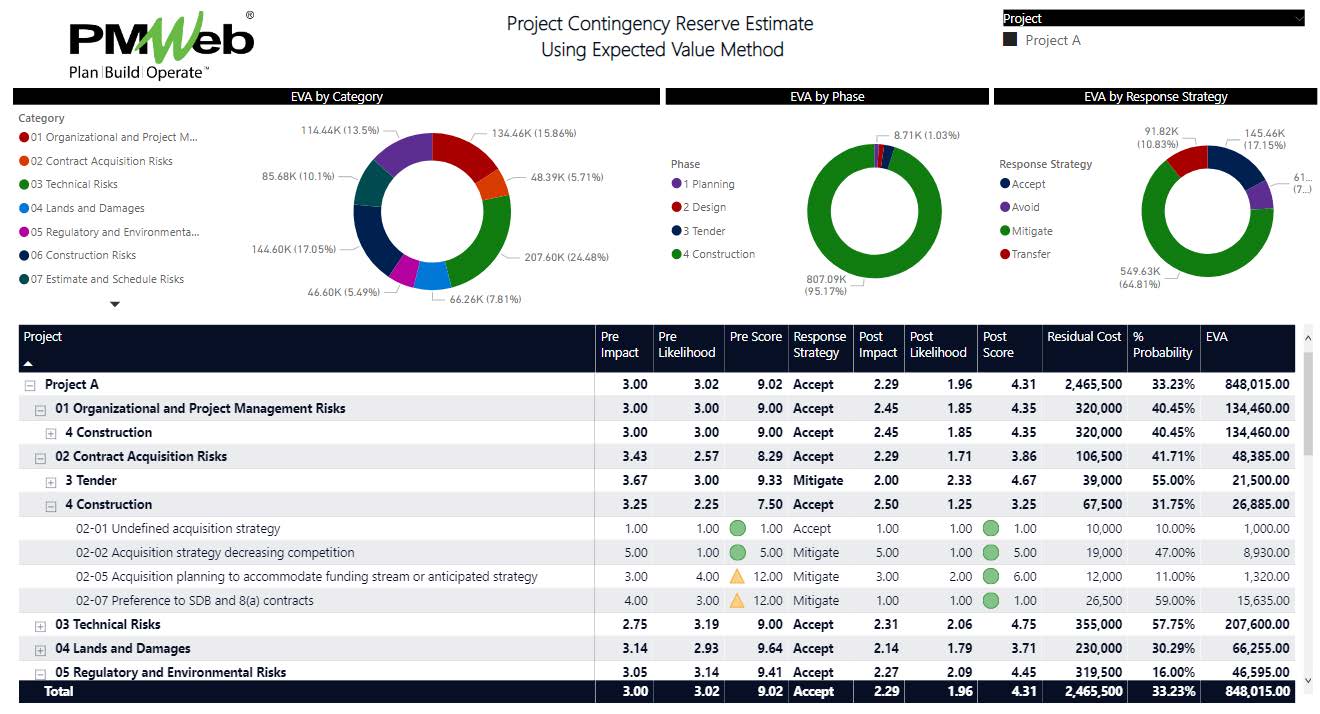
Using a Project Management Information System (PMIS) like PMWeb, the project contingency reserve can be estimated, managed, monitored, evaluated, and reported on. PMWeb Risk Analysis module helps to identify risks for each project risk category as well as the pre-mitigation and post-mitigation impact and probability of occurrence, residual cost impact also known as “Cost” and the expected value of each identified risk also known as the “Risk Cost”. The risk register also includes the project phase the risk is associated with, selected risk response risk strategy, associated project schedule activity, and others.
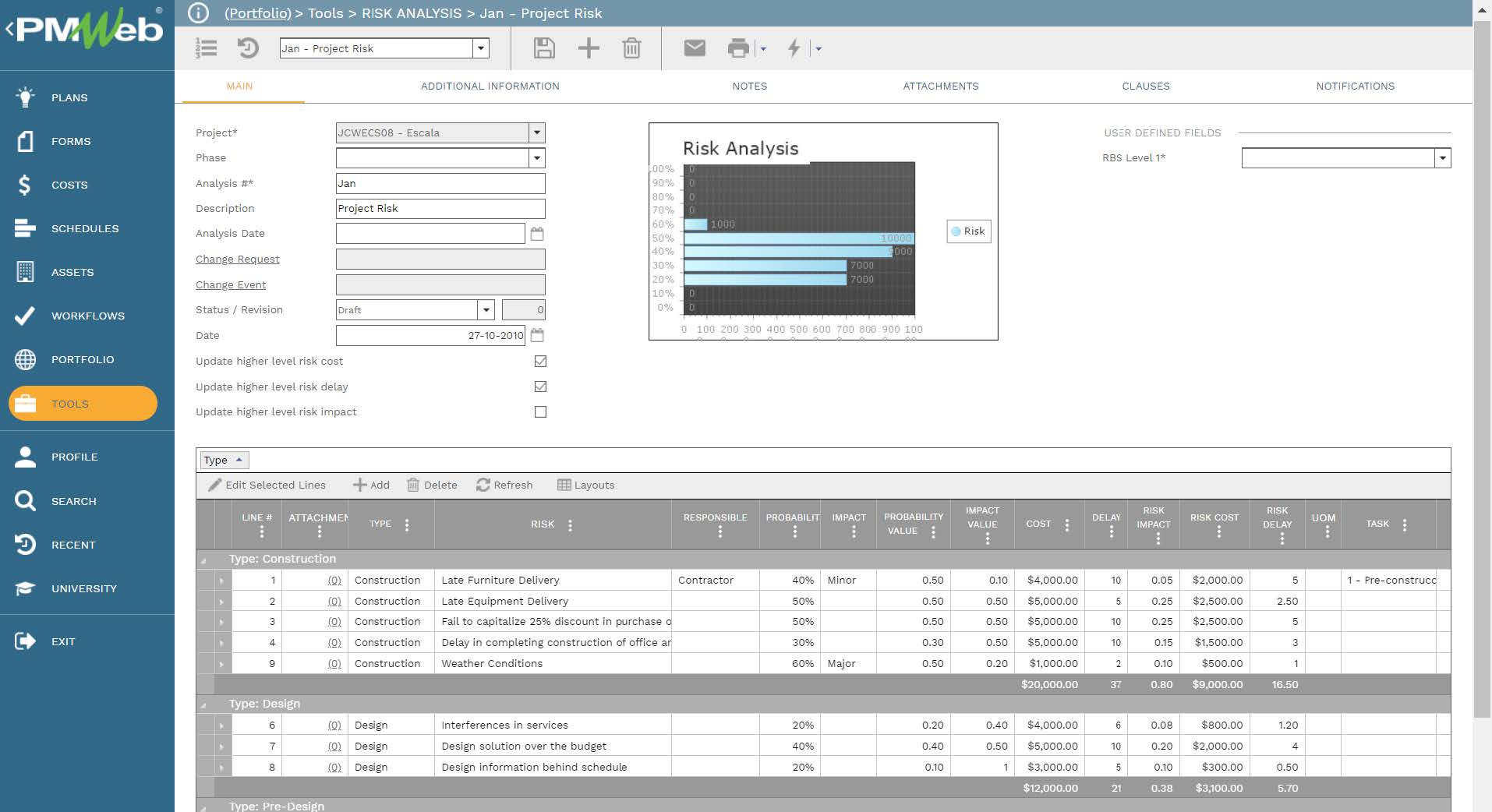
Like all other business processes managed in PMWeb, supportive documents that are associated with each risk identified in the risk analysis register for each risk category are attached to their relevant templates. It is highly recommended to add details to each attached document to better explain to the reader what is being attached and viewed. In addition, links to other relevant records of other business processes managed in PMWeb can also be linked to the records of those change-order-related business processes.
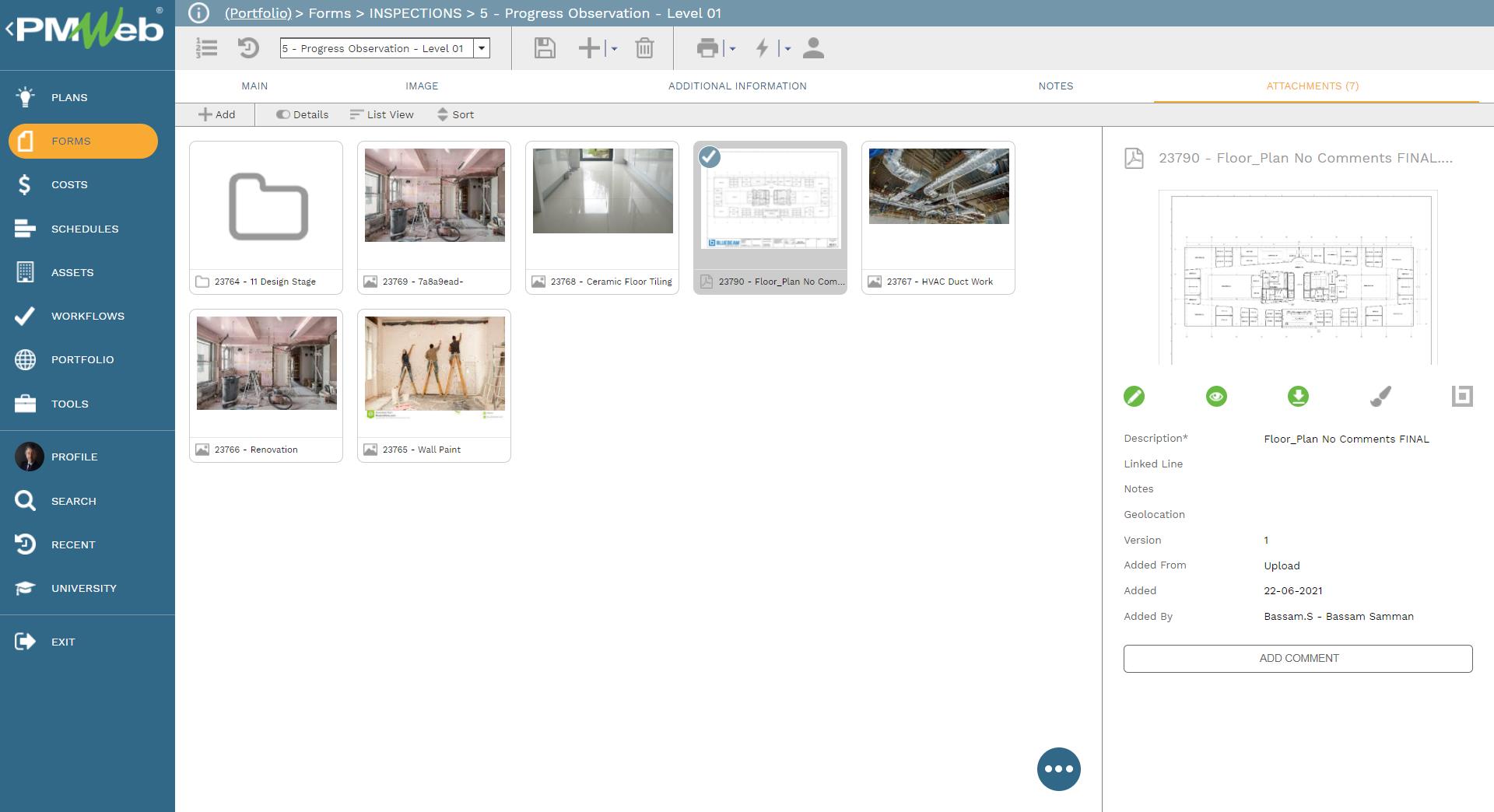
It is highly recommended that all those supportive documents, regardless of their type or source, get uploaded and stored on the PMWeb document management repository. PMWeb allows creating folders and subfolders to match the physical filing structure used to store hard copies of those documents. Permission rights can be set to those folders to restrict access to only those users who have access to do so. In addition, PMWeb users can subscribe to each folder so they can be notified when new documents are uploaded or downloaded.
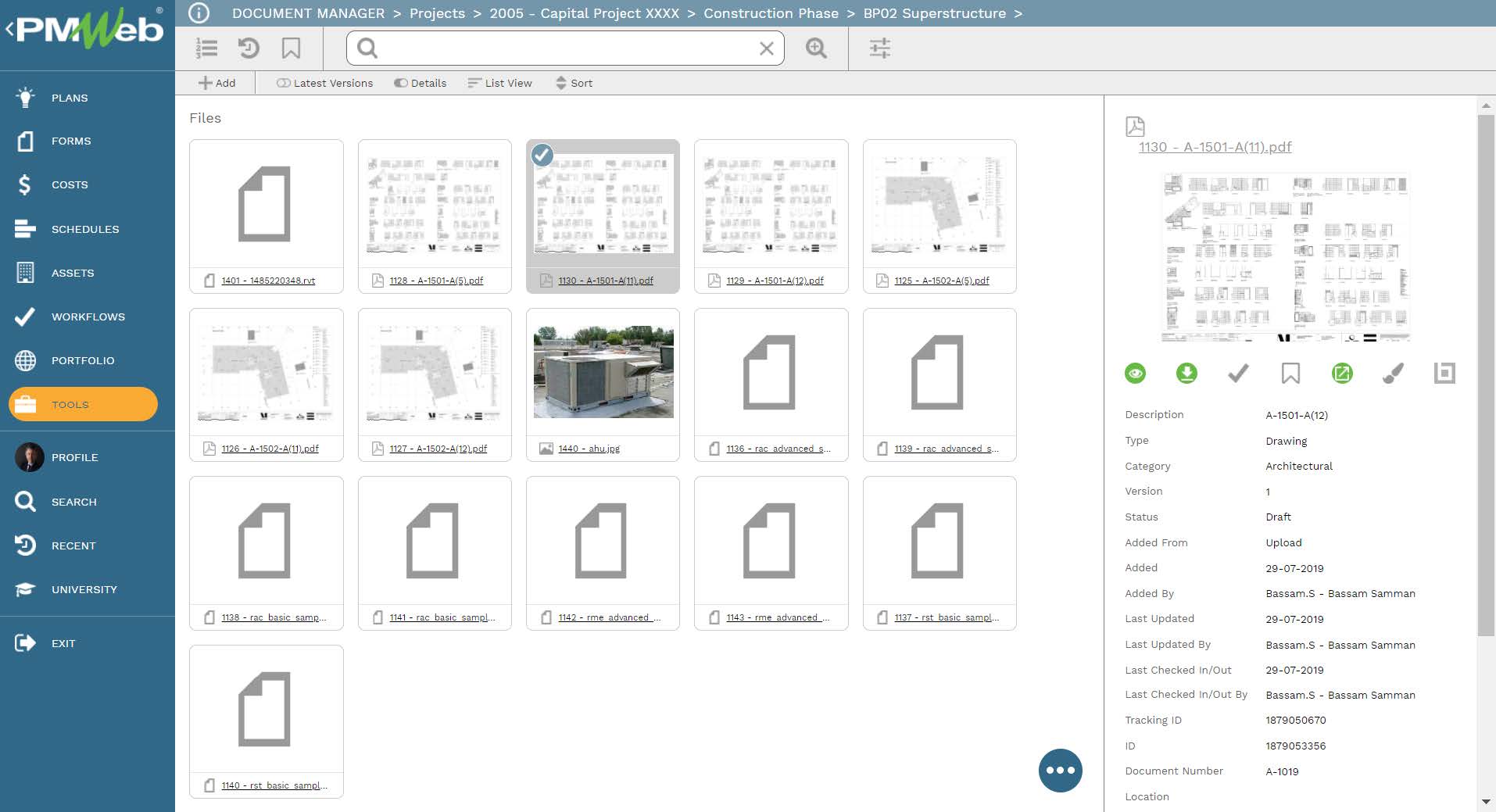
To ensure that the submit, review, and approve dates of each risk register for each risk category submission are captured, assign a workflow to the risk analysis business processes. The assigned workflow will map the submit, review, and approve tasks, roles or roles assigned to each task, task duration, task type, and actions available for the task
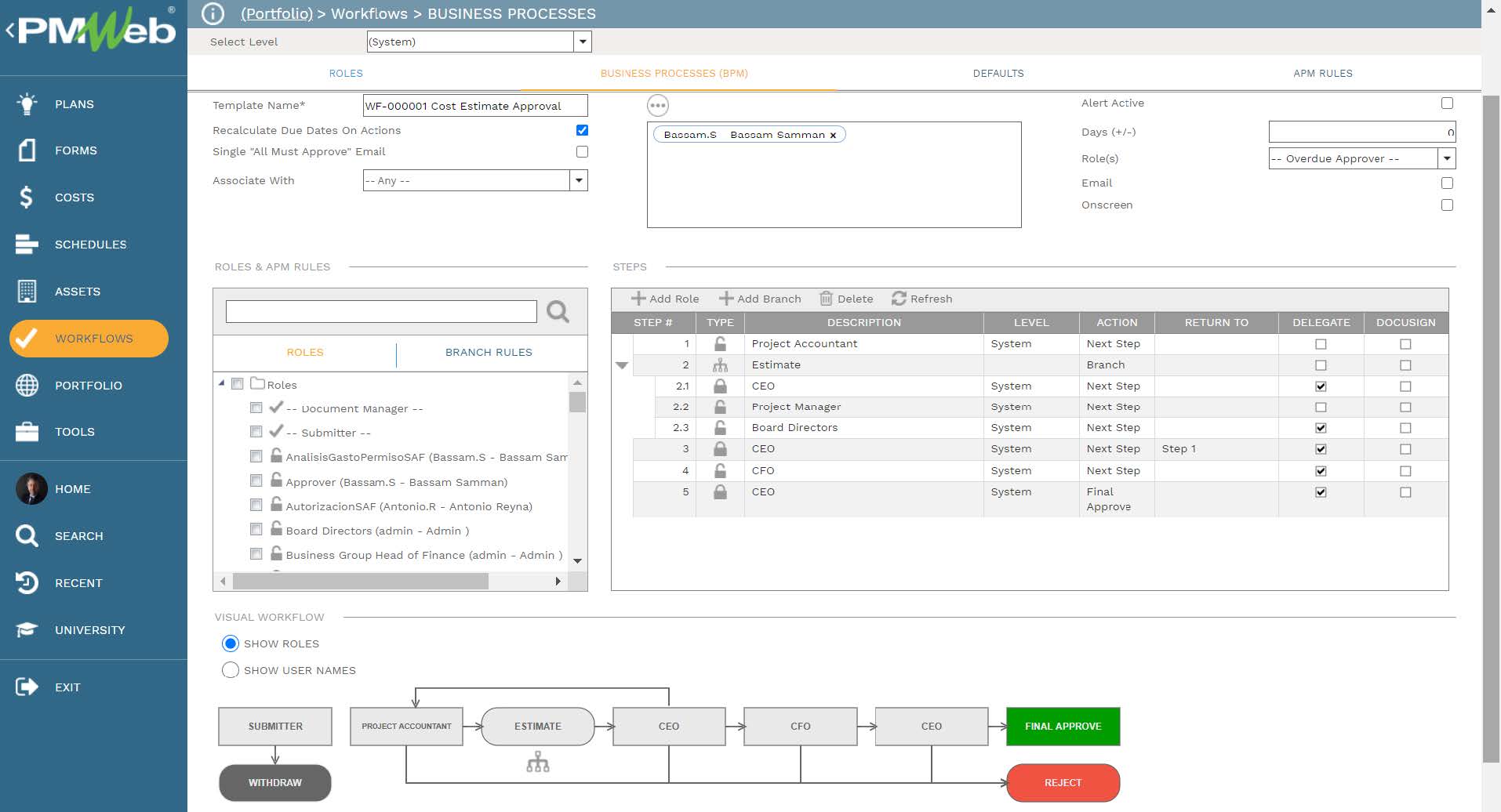
When the risk register for any of the risk categories is initiated, the workflow tab available on the relevant template captures the planned review and approve workflow tasks for each transaction as well as the actual history of those review and approval tasks. The captured workflow data includes the actual action data and time, done by who, action taken, comments made, and whether team input was requested.
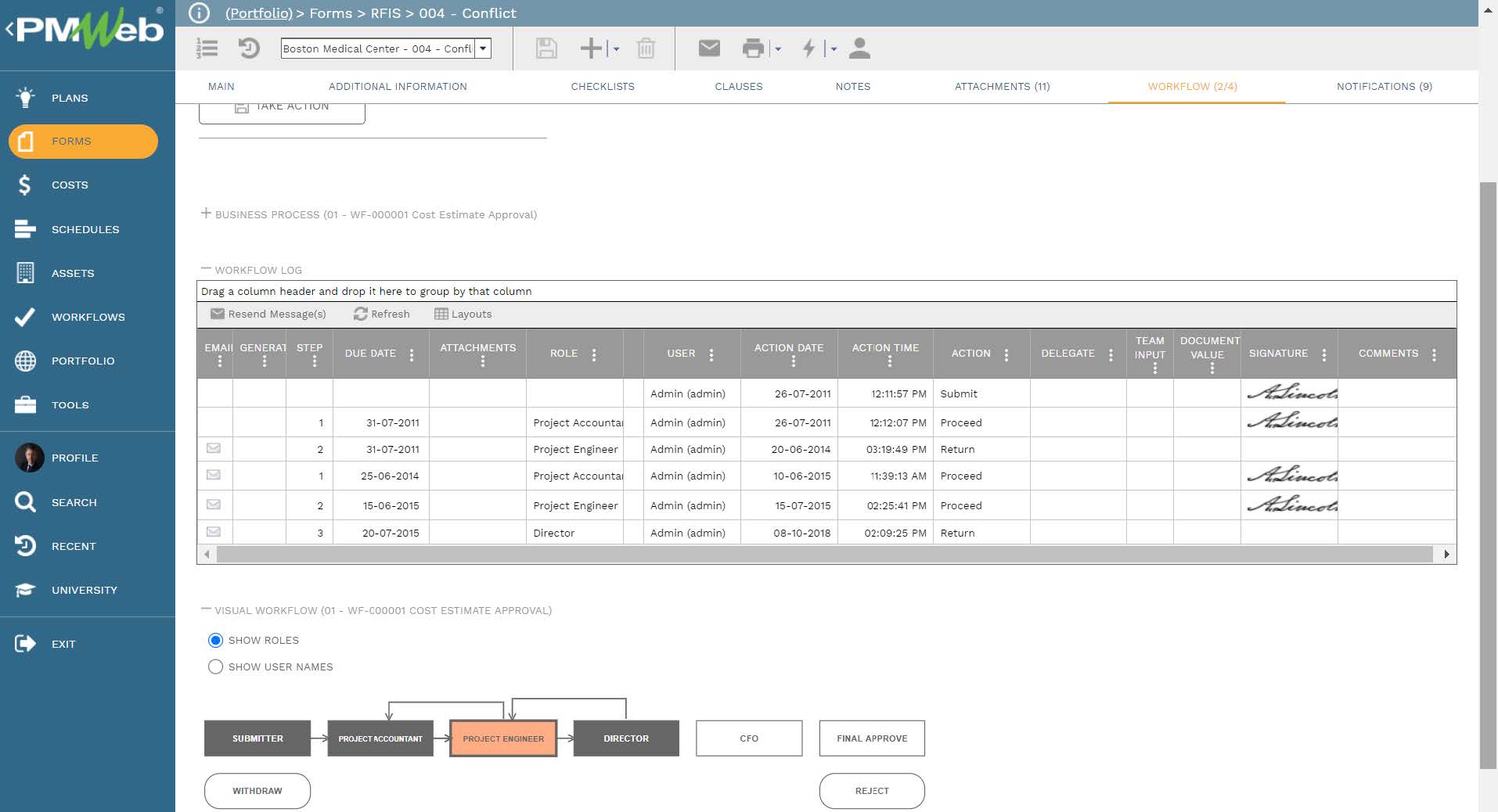
The project contingency reserve estimate using the Expected Value Method report is generated from the data captured in PMWeb risk analysis registers created for the project risk category. The report groups the risks identified under each risk category by the project phase it belongs to. It details the pre-mitigation risk impact and occurrence likelihood and risk score, selected risk response strategy, post-mitigation or treated risk impact and occurrence likelihood and risk score, residual risk value, probability of occurrence, and the risk expected value. The report includes three donut visuals to summarize and group the expected value of the project contingency reserve by risk category, project life cycle phase, and selected risk response strategy to treat the risk. The interactive report adjusts the risk register display depending on the risk category, project life cycle phase, and/or risk response strategy selected.
